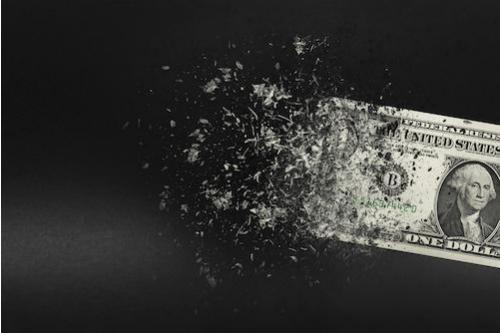
Fed Anti-inflation Policy Falls Short
A little over 40 years ago, the U.S. was experiencing double-digit inflation, as it may well be now. At that time, relatively newly appointed US Federal Reserve (Fed) chairman, Paul Volcker took the inflation bull very much by the horns and initiated moves which indirectly resulted in the Fed’s interest base rate rising to an unprecedented almost 20%. This, in turn, led to the deepest US recession since the 1930s, followed by a second downturn a year later, but also, in hindsight, paved the way for a couple of decades of low American inflation and economic growth that became the envy of the developed world and kept the U.S. in the driving seat of the global economy over this period.
Volcker’s brave move should, perhaps, have provided a path which the current Jerome Powell-led Fed might have considered following, but other factors – many of which are down to Fed policy decisions over the past few years – have made a similar move virtually impossible to make. Powell is an admirer of Volcker as he expressed in a speech at the 2021 Jackson Hole FOMC meeting, but his options for following the Volcker example had been made almost impossible by extraordinarily high US debt levels. Even if the Fed was prepared to initiate a hugely severe recession, which the imposition of a high-interest rate level would almost certainly precipitate, the cost of servicing the huge debt the US had run up over the previous few years at a high-interest rate level, has made such a move virtually financially untenable.
Indeed the Fed has balked in the relatively recent past of initiating any interest rate policy which might induce a recession, so it is far from surprising that anything approaching the scale of the 1979/80 Volcker shock would even be considered. In the event, the Fed, at last week’s FOMC meeting, initiated an interest rate rise of an absolutely minimal, and we feel totally ineffective in the inflation control context, of a minimal 25 basis points.
Even with the promise of a number of further similarly-sized interest rate rises at further FOMC meetings this year and next this would only bring the Federal Funds rate to 1.9% by the end of the current year and perhaps 2.5% next. In our view, this would be a long way off from bringing inflation under any degree of control at all. Indeed inflation levels are being exacerbated by the additional price pressures coming in now as a result of the Russia/Ukraine conflict and the global effects of the hugely more stringent economic sanctions being imposed on the Russian economy.
Russia, and Ukraine, are the world’s dominant exporters of some key food products (grain and sunflower derivatives) and these will undoubtedly suffer because of the war coupled with the sanctions on Russia. The latter is also among the world’s top producers and exporters of many precious and base metals and oil and natural gas and the degree to which sanctions affect these exports will have a huge impact on global price structures. Even where countries are effectively self-sufficient in all these, or receive most of their supplies from unaffected nations, an interruption to Russian and Ukrainian exports will have a significant impact in raising global prices regardless. In other words, this will all have a major effect on world inflation pressures.
Blocking Russian access to the SWIFT system on which payments for much global trade is largely dependent, while the freezing of access by Russia to its monetary reserves held elsewhere in the world, could have a huge impact on the way the world economy operates. The law of unintended consequences may thus have a knock-on effect which will hugely change the way economic relationships between countries pan out.
There will be winners and losers here, but which nations will ultimately come out on top remains to be seen, although we suspect America’s current dominance of the global trade and reserve currency system will be adversely affected. We suspect that China, as long as it keeps out of overt involvement and/or overt support for either side in the Russia/Ukraine conflict, may well come out as the ultimate winner in the global economic context.
Precious metals prices were prime beneficiaries of Volcker’s policies back in the 1980s almost doubling in price subsequently, and we suspect they will do well this time around in the high inflation environment too. Negative real interest rates which will result from high inflation, coupled with only tentative interest rate rises will probably ensure this. However, they are unlikely to do as well as in the Volcker shock years given the enormous downturn in the US economy following those economic moves in the early 1980s. The Fed may not be doing much to ward off the growth in inflation over the next couple of years, but the moves it is making may also prevent the kind of economic collapse seen back in the Volcker era. Stock markets and property prices then crashed in value making a drive into investment safe-haven assets an extremely wise move. While we suspect that only marginally-controlled inflation will again prompt big downturns, this looks to us unlikely to be on the kind of scale seen back then.
So, expect particularly risky assets like general equities and bitcoin to suffer downturns and safe-haven assets to make gains ultimately - although perhaps by not quite as much, or as rapidly, as some commentators have been suggesting. We are entering extremely uncertain times on the global economic front and investment options will be severely influenced by international geopolitics and the Ukraine war.
If President Putin escalates matters by using chemical, biological, or even tactical nuclear weaponry in Ukraine given the stiff resistance of the Ukraine army and populace, as has been suggested by President Biden in his latest address, then gold, in particular, could make another strong upwards move, although it appears to be showing some weakness to date We are living in a world that seems to become more dangerous every day. Safe haven assets may thus come to the fore again, not that they will provide much protection should World War 3 and the nuclear doomsday scenario become reality.






